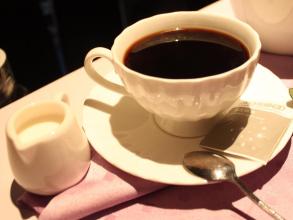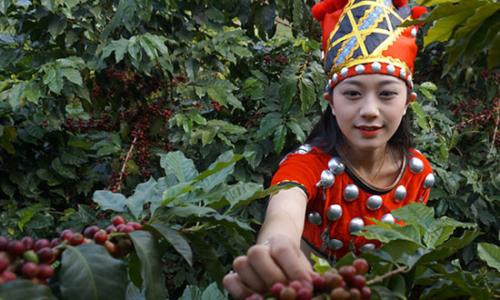Introduction to the characteristics and flavor of gardening prostitute coffee beans produced in Candlestick, Costa Rica
Introduction to the characteristics and flavor of gardening prostitute coffee beans produced in Candlestick, Costa Rica
Among the many excellent producing areas in Costa Rica, there is a famous producing area-Tarazu (Tarrazu), which can also be called Tarasu. Tarazhu is very famous in the world of boutique coffee and is one of the major coffee producing areas in the world. In the 2014 COE competition, of the 23 beans on the list, a total of 17 came from Tarasu.
There are eight Costa Rican producing areas, of which three are recognized as the best. Tarazu, the Central Valley and the Western Valley. Las Lajas is located in the foothills of Sabanilla de Alajuela and Poas Volcano in the Central Valley.
After the coffee fruit is ripe, it is picked by hand, and only the ripe red-purple berries are picked. The processing method of raw coffee beans is washed with water, which is treated at a very unique constant temperature. The degree of fermentation makes the clarity and complexity of coffee get an excellent balance, and its flavor shows better stability. It is really intoxicating to show the very special flavor of Geisha (Rosa / Geisha).
Costa Rican coffee has full particles, ideal acidity and unique strong flavor. Costa Rica's coffee industry, originally controlled by the Costa Rican Coffee Industry Company (ICAFE), has been taken over by the official Coffee Committee (Oficinale Cafe). Among the exported coffee, those products that are considered to be of substandard quality are colored with blue vegetable dyes and then transferred back to China for sale. Coffee consumed domestically (dyed blue or undyed) accounts for about 10% of total production, and local per capita coffee consumption is twice that of Italy or the United States.
Yellow honey: about 40% of the pectin is removed; the drying method requires the most direct heat absorption, receives the most light drying, and lasts for about 8 days to reach a stable water content.
Red honey: about 25% of the pectin is removed; it takes longer to dry than yellow honey, and reduces direct exposure to sunlight, even in shading sheds, lasting about 12 days.
Black honey: almost no removal of pectin; drying takes the longest time, lasting at least 2 weeks, using covering to avoid too strong sunlight, prevent drying too fast, and make sugar conversion more fully.
Costa Rican coffee is full of Arabica beans, washed with water, its style is bright, fragrant, clear as wind chimes swaying in the breeze, mild acidity and sweetness. Because of the sweetness, even if the coffee gets cold, it tastes very good, which is a major feature of Costa Rican coffee. Therefore, it is suggested that when you taste Costa Rican coffee, you should only add a small amount of sugar and cream, so that you can enjoy its girlish flavor.

Important Notice :
前街咖啡 FrontStreet Coffee has moved to new addredd:
FrontStreet Coffee Address: 315,Donghua East Road,GuangZhou
Tel:020 38364473
- Prev

Flavor description method for taste characteristics of Costa Rican Faramy coffee beans
Taste characteristics of Costa Rican Faramy Coffee beans the biggest difference between treated honey and Brazilian semi-washed coffee beans is that the former does not drip, because it is important to choose flawless red fruits for pectin to be sweet. The honey-treated pectin planer is even more demanding, and the thickness of the pectin planing must be precisely controlled, just like a bean grinder in Costa Rica, on a scale like Elsa.
- Next

A brief introduction to the flavor description of the international price of West Java coffee beans in Indonesia
A brief introduction to the flavor description of the international price of West Java coffee beans in Indonesia Java coffee has a wonderful fruit flavor with a BlackBerry and grapefruit flavor and is a favorite of many coffee glutton. This coffee has an excellent medium purity, crisp and refreshing taste. It has a fresh flavor and is most suitable for drinking iced coffee in summer. When tasting this coffee, if it goes with it
Related
- Detailed explanation of Jadeite planting Land in Panamanian Jadeite Manor introduction to the grading system of Jadeite competitive bidding, Red bid, Green bid and Rose Summer
- Story of Coffee planting in Brenka region of Costa Rica Stonehenge Manor anaerobic heavy honey treatment of flavor mouth
- What's on the barrel of Blue Mountain Coffee beans?
- Can American coffee also pull flowers? How to use hot American style to pull out a good-looking pattern?
- Can you make a cold extract with coffee beans? What is the right proportion for cold-extracted coffee formula?
- Indonesian PWN Gold Mandrine Coffee Origin Features Flavor How to Chong? Mandolin coffee is American.
- A brief introduction to the flavor characteristics of Brazilian yellow bourbon coffee beans
- What is the effect of different water quality on the flavor of cold-extracted coffee? What kind of water is best for brewing coffee?
- Why do you think of Rose Summer whenever you mention Panamanian coffee?
- Introduction to the characteristics of authentic blue mountain coffee bean producing areas? What is the CIB Coffee Authority in Jamaica?

